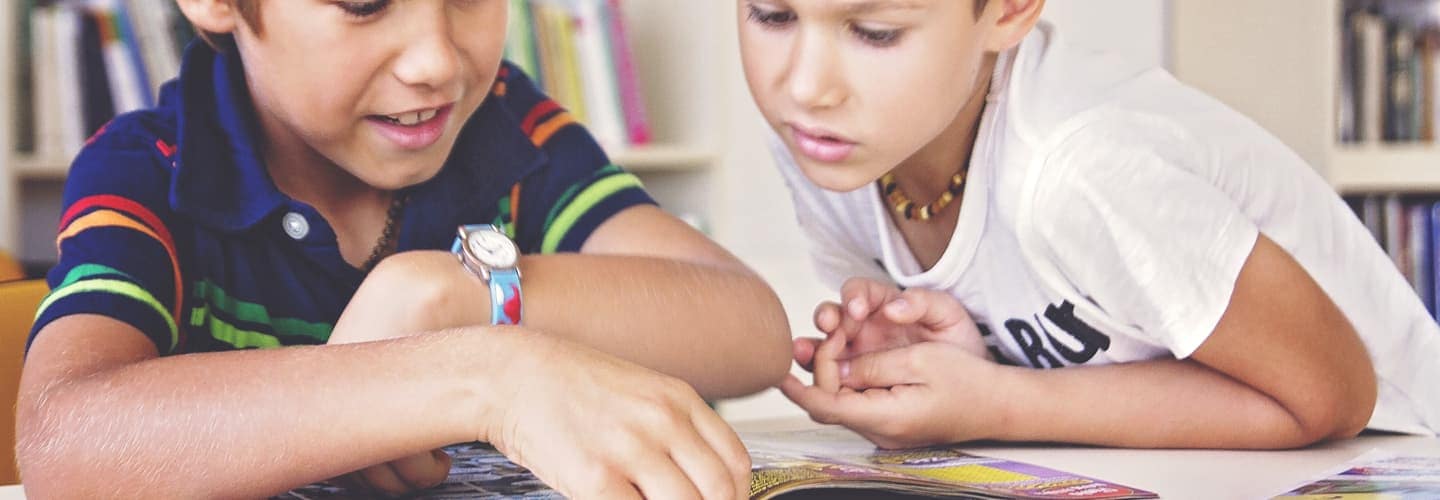
7 reading strategies for primary and secondary
Reading can transport students to new places, immerse them in incredible adventures and teach them more about the amazing world around them.
What’s more, in today’s globalized world our students are exposed to written English more and more every day. It’s essential they have the skills needed to be successful in this environment. Many students are also going on to study in English at university and require a number of academic reading skills.
It’s important you work on these areas in class to prepare learners for their future. Here are seven reading strategies to get you started including tips for both primary and secondary teachers.
1. Predicting what’s to come
Even before students start reading, we can use extra information on the page to get them thinking about the ideas and vocabulary they will find in the text. This encourages them to consider what they may already know about the topic. And, by adding an element of competition, we can also use it as a strategy to motivate them to read.
Divide the class into teams and write the title of the text on the board. Have them work in their teams and write ten words they predict will be in the text, based on the title.
After a few minutes, have teams swap lists and, as they read the text, check the words the other team correctly predicted.
If you are teaching primary, you can do the same activity using any images which accompany the text. Have students describe the image in pairs first and then work in teams to predict the article's content, as above.
2. Summarizing
This strategy can focus on both the general idea of the text (the gist), and the most important details within it.
To work on using summarizing for gist, give students a text and three short summaries of it, no longer than a sentence each. After students scan the text once, have them choose which of the three summaries best matches the general idea of the text.
Then, to practice these skills, have them work in pairs to produce a summary of the text they just read. This summary should be approximately one-fifth the length of the original text.
This not only encourages students to identify the text's main points but also requires them to use paraphrasing skills to put the ideas into their own words.
Note that primary learners may need your support to create a summary. It’s a good idea to create a gapped text which they can complete with the keywords of the text. This will also help build their vocabulary.
3. Identifying topic sentences
Whether your students are reading for gist or detail, a topic sentence can give them the necessary information. Topic sentences are found at the start of a paragraph and are frequently used in articles and academic research to give the reader the main idea of what is to come. If you are unsure what a topic sentence looks like, the first sentence of this paragraph is an example!
One idea to introduce students to the idea of topic sentences is to find a text with four or five paragraphs and remove the topic sentence from each.
Give the students the gapped text and the topic sentences and have them match each sentence to the correct paragraph. This will highlight how topic sentences provide a summary of the main idea of each paragraph.
This can be an effective task for both primary and secondary students, though it’s likely that primary students will be working with shorter texts. If you have a text with only three paragraphs, you can write a couple of distractor sentences to make the activity more challenging.
4. Comparing and contrasting
As with any aspect of language learning, if students can create a personal connection to the content, they will be more engaged and more likely to remember the information.
We can use compare and contrast questions with any text. For example, for texts which tell a personal story, we can ask:
- How are you similar or different to this person?
- What would you do in that situation?
For texts which talk about a particular issue, we can ask:
- Do you think this is a problem in your country?
- What would you do in this situation?
Students of any age should be allowed to reflect on their learning and have the chance to empathize with the people and situations they read about. Even for younger learners, questions can be graded to their level to allow them to compare their experiences to the content of the text.
5. Understanding numbers
Non-fiction texts often include a lot of facts and figures and it’s important that students are able to understand what these numbers mean so they can really understand the text.
Our younger learners might need help appreciating long distances or large quantities, so providing them with something more tangible can help them greatly.
When working with distances and sizes, try to use familiar locations, such as the length of the school playground or the area of the classroom, and compare these locations to the measurement in the text.
Similarly with quantities, find something which students can relate to easily. For example, if a text talks about the number of people, compare that amount to the number of students in the class.
6. Working with vocabulary
Teaching students how to use a dictionary is important, but it’s also essential that students can use other skills to understand new words when they can’t reach for a dictionary.
As teachers, it’s important for us to identify the keywords in a text which we want students to remember and use after the lesson. You may choose to pre-teach this vocabulary so that students can approach the reading with a good understanding of the key lexis.
However, there may be times when you want students to predict the meaning – of key and subsidiary vocabulary – from the context. It’s helpful to teach students to read around unfamiliar words as this helps them to identify the type of word it is (noun, verb, adjective, and so on), which helps them understand a particular word’s meaning within a sentence.
7. Separating fact and opinion
While many texts our students read are factual, there will be times when they also need to distinguish between fact and opinion.
Sometimes, we can infer the writer’s attitude towards a topic by looking at the type of language they use and identifying whether words are neutral, or if they give us clues as to the writer’s opinion. This can be a difficult distinction for our students to make but we can do activities with the students to raise their awareness.
Take a subject students are likely to have different opinions about, such as a famous footballer. Ask the students to tell you about that person, then categorize the words they give you as to whether they provide a fact or an opinion. Words such as tall, Brazilian and blue eyes would be facts about the player. Whereas amazing, stupid or the best player ever would show their opinion.







